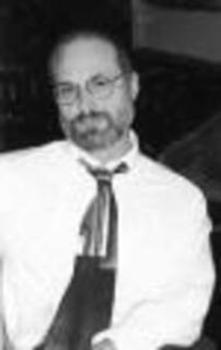Communication access realtime translation (cart) is provided in order to facilitate communication accessibility and may not be totally verbatim. The consumer should check with the moderator for any clarifications of the material.
>> Amy Natho: Welcome to the SpeechPathology.com E-learning Expert Seminar entitled, “Introduction to Dysarthria.” My name is Amy Natho and I'm going to be moderating today. At this time it is a great pleasure and very much an honor to introduce George Fluharty, M.A., CCC-SLP. George is an SLP with more than 30 years experience treating neurogenic communication disorders. His work has been published in Brain Injury, Clinical Rehabilitation and Advance. In 2003, he received the Clinical Service Award from the Brain Injury Association of Wisconsin for outstanding clinical service. Welcome, George, and thank you very much for being here today.
(Applause)
>> George Fluharty: Thank you, Amy. “Introduction to Dysarthria” will provide a basic review of the characteristics of different types of dysarthria. It will also provide a discussion of several approaches supported by evidence in the literature for improving communication of people with dysarthria. Whenever possible, I will emphasize low-tech, inexpensive approaches. The last five minutes of the presentation will be set aside for questions. On the following slides I will describe two definitions of dysarthria and one definition of evidence-based practice.
Definitions of Dysarthria and Evidence-Based Practice
Dysarthria is a motor speech disorder. It is not a language disorder such as aphasia and it is not a cognitive impairment. Dysarthria can certainly co-exist alongside aphasia, dementia, or confusion as well as impairments in attention, memory or executive function, but it is a separate and distinct condition. For people with dysarthria, damage to the nervous system causes parts of their speech mechanism such as their lips, tongue, soft palate, larynx, and respiratory muscles to be weak, lack coordination and/or move slowly.
Another definition of dysarthria is provided by Blanchet and Snyder (2010). They list the processes (i.e., respiration, phonation, resonance, articulation, and prosody) that can be affected as a result of it. And they state that dysarthria refers to speech problems due to neurological damage. This part of their definition mirrors Yorkston and Beukelman's (2004) referral to damage to the central or peripheral nervous system.
Now might be a good time to add that dysarthria is, of course, different from apraxia, which is an impaired ability to sequence movements. As Brookshire pointed out, damage to the language dominant hemisphere is associated with apraxia of speech. Pathology affecting the brainstem, basal ganglia, or peripheral nerves is associated with a diagnosis of dysarthria. Apraxia of speech is indicated by normal strength and range of motion for simple oral nonspeech movements. Dysarthria is indicated by reduced muscle strength and range of motion for simple nonspeech movements. Apraxic speakers usually produce islands of error-free speech in automatic utterances such as “Wait a minute” or “What do you know.”
Evidence-based practice, or EBP, is a continuing process. EBP pays special attention to the outcomes of intervention. Sackett, Richardons, Rosenberg and Haynes (1997) say that EBP includes the best research evidence, the experience of the therapist, and the values of the patient. Patient values are the expectations, concerns and preferences unique to each individual that each client brings to therapy. Best research evidence includes, of course, information on the safety and effectiveness of therapy techniques as well as the accuracy and precision of tests. Clinical expertise draws on the past experience of an SLP as well as the skills they have learned to assess the benefits and risks of interventions. SLPs need to use good clinical judgment based on the specific characteristics and circumstances of each client in deciding which therapeutic approaches to take.

